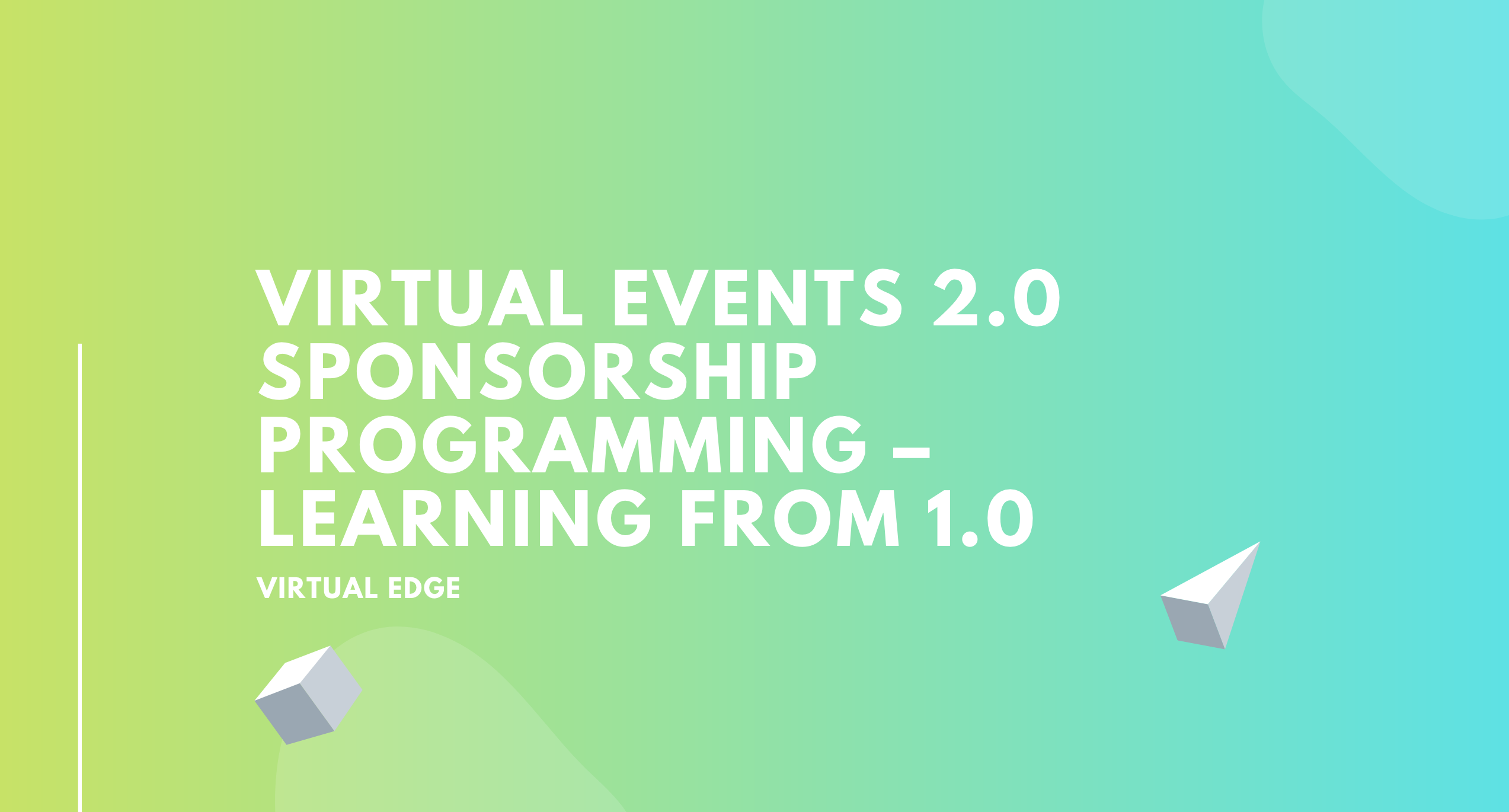Virtual Events 2.0 Sponsorship Programming – Deep in the annals of trade show management history resides the simplicity and brilliance in the design of the ‘onsite booth re-sign program’. Consider these revenue-producing 2.0 elements that were created as a result of this legacy program;
- Immersive customer focus- in one place, at one time, seen by the signing of contracts for a service that was to be delivered a year later
- Real-Time floor plan pandemonium ensues in an epic ‘brand ego’ battle, predicated on trade show audience/buyers reaction to booth size selection.
- Long tail investments made by customers in the form of ancillary marketing promotional sponsorships in order to expand reach beyond their booth presence.
- ‘Social Media like’ viral communications regarding the floor plan emanating from the re-sign room to the exhibit hall.
What motivated these 2.0 behaviors in this 1.0 onsite booth resign approach? One way to break it down would be to consider the inflection points inherent in this ‘onsite booth re-sign’ process.
First came the event Platform -in this case the exhibit hall floor plan- which attracted and generated a need for a Community (audience/buyers and customers) Voice, producing demand for a broader scope of Commerce Tools from which the community could chose to communicate their marketing message.
Let’s consider some sponsorship programming principles we can derive from these inflection points in the construction of a profitable and compelling virtual event;
Platform
The virtual events you create around your brand are best received when they genuinely portray the foundational content buyers have come to expect from you. This dynamic heeds the call for a pre-requisite ‘checklist’ when assembling your ‘Exhibit Hall’ sponsorship prospect list;
- Is your prospect list of exhibit hall sponsors a direct match with the core content that will be present in the virtual conference?
- Does your prospect list represent the full spectrum of market vendors in terms of size and custom applications?
- Have you isolated at least 10 prospects in each specified vertical market related to the core content?
This checklist helps insure a few important factors for success. First, that your virtual exhibit hall is seen as relevant match to the content in the eyes of both audience/buyer and customer constituents. Success for both audience/buyer and customers will also result if the exhibit hall is reflective of a full spectrum of solutions. And your prospect-list analysis at the very early stages of your selling cycle will provide the time needed to close a critical mass of dynamic vendors who can in turn help promote your virtual event.
Need for Community Voice
With a strong, relevant, and well-planned virtual event platform is spawned community reaction and the need to share. In these terms, sponsorship programming opportunities can be create that give communities arenas to share. One approach can be to establish a Networking Lounge interface on your virtual event welcome page- that than offers arenas for specific ‘product category’ discussions. This allows you to ‘tier’ your sponsorship offerings by product category and level of investment. You will have also created a ‘brand-ego battle’ amongst sponsors similar in what we saw portrayed in the onsite booth resign program scenario earlier in the article.
Another sponsorship programming opportunity in this community voice realm is the ability to seed adjacent market topics. For example – if you were conducting a virtual conference on video game development- it might be interesting to create a networking arena sponsored program around the legal implications of intellectual property. Imagine your game industry sales team contacting the largest law firms in the country about your virtual event! Now you are accelerating your team’s sales prospecting imagination- inspiring adjacent markets to be innovative in their marketing strategy-and increasing your virtual event revenues.
Need for the Best Commerce Tools
Virtual events allow you the opportunity to offer a wide spectrum of sponsorship executions for customers. Take a look at your present sponsorship inventory- does it include Display Banner, Video, RSS, or Podcast capabilities? Now consider communication tools that promote pre and post virtual event collaboration- like Wiki’s, Blogs, Micro sites, and Groups. ‘Commerce Tools’ represent your sales team’s imperative to intently understand what their customers goals are, who they are trying to reach, and how can they best communicate their competitive advantage. In your sales team prospect planning- require them to know what current communication tool assets they use, and also have examples of customers who use a specific medium (such as video) that is particularly effective.
